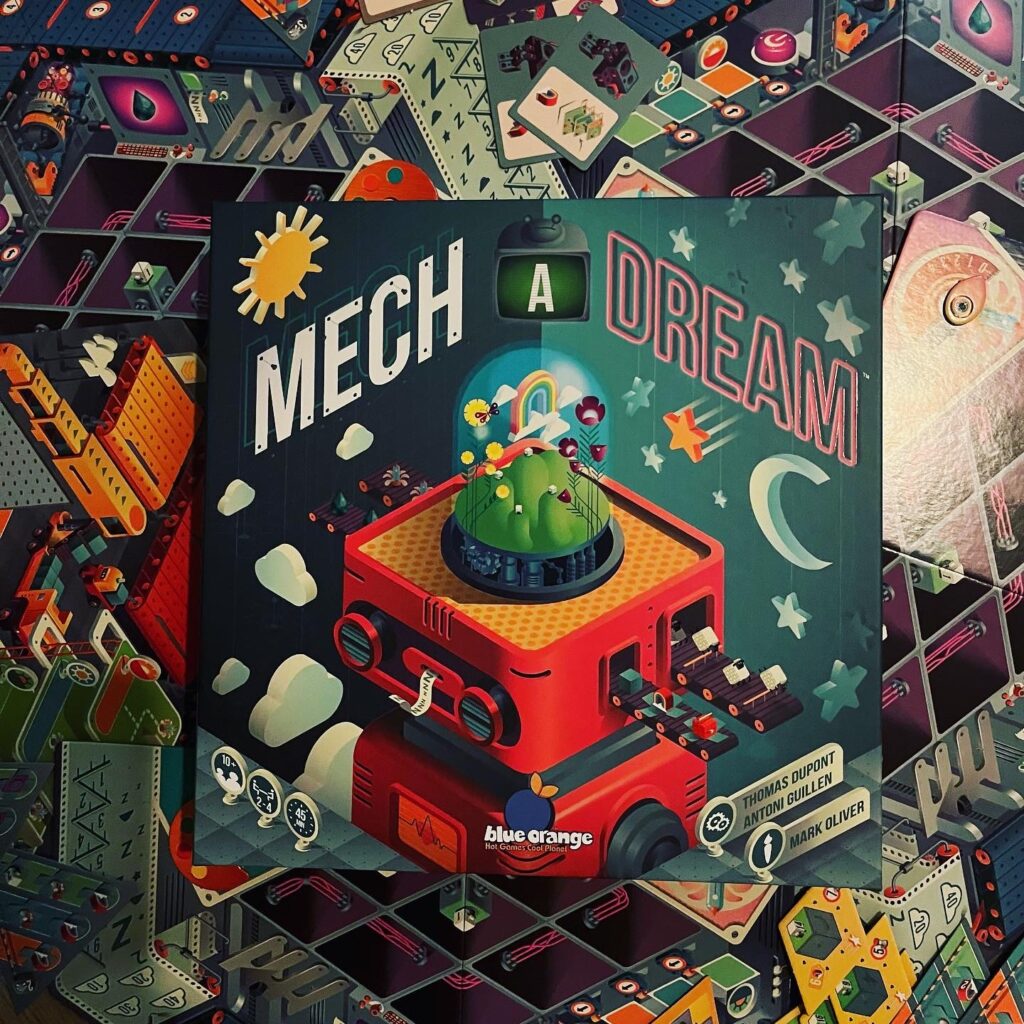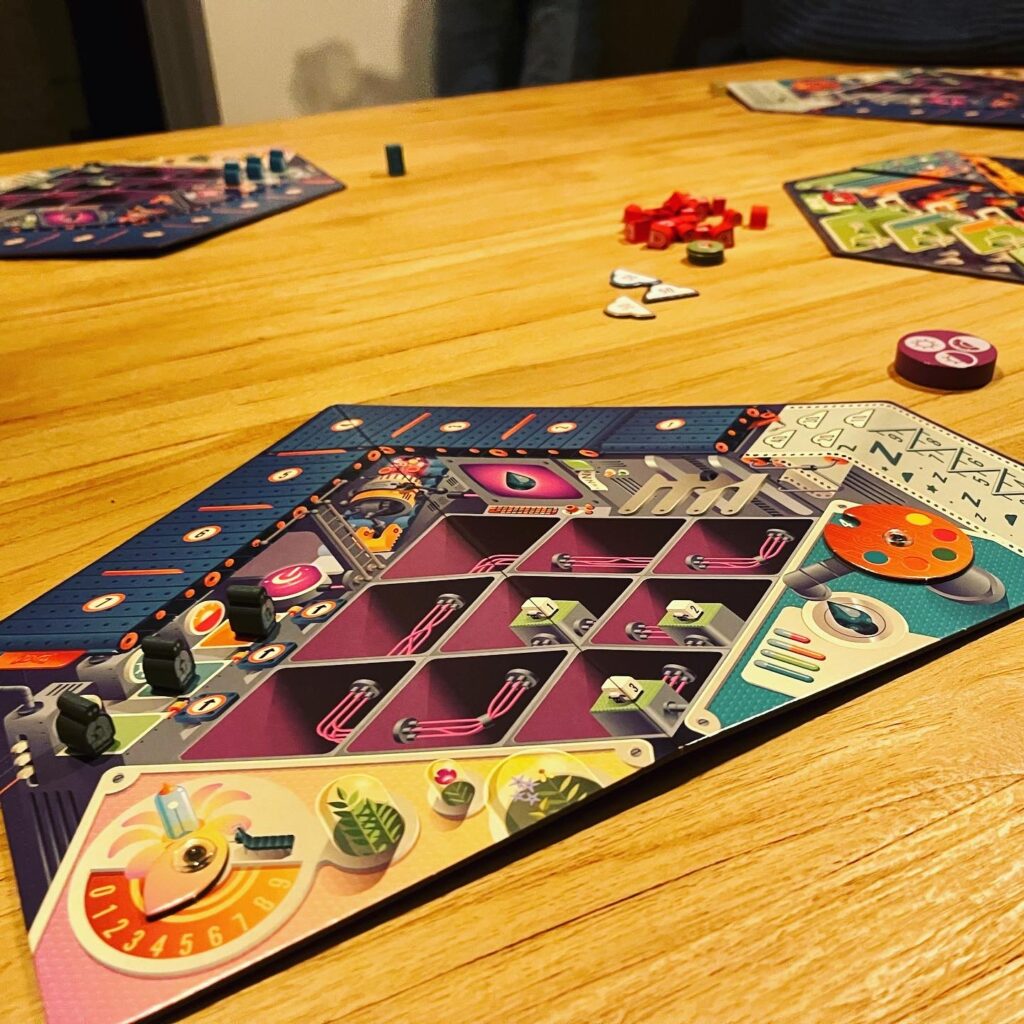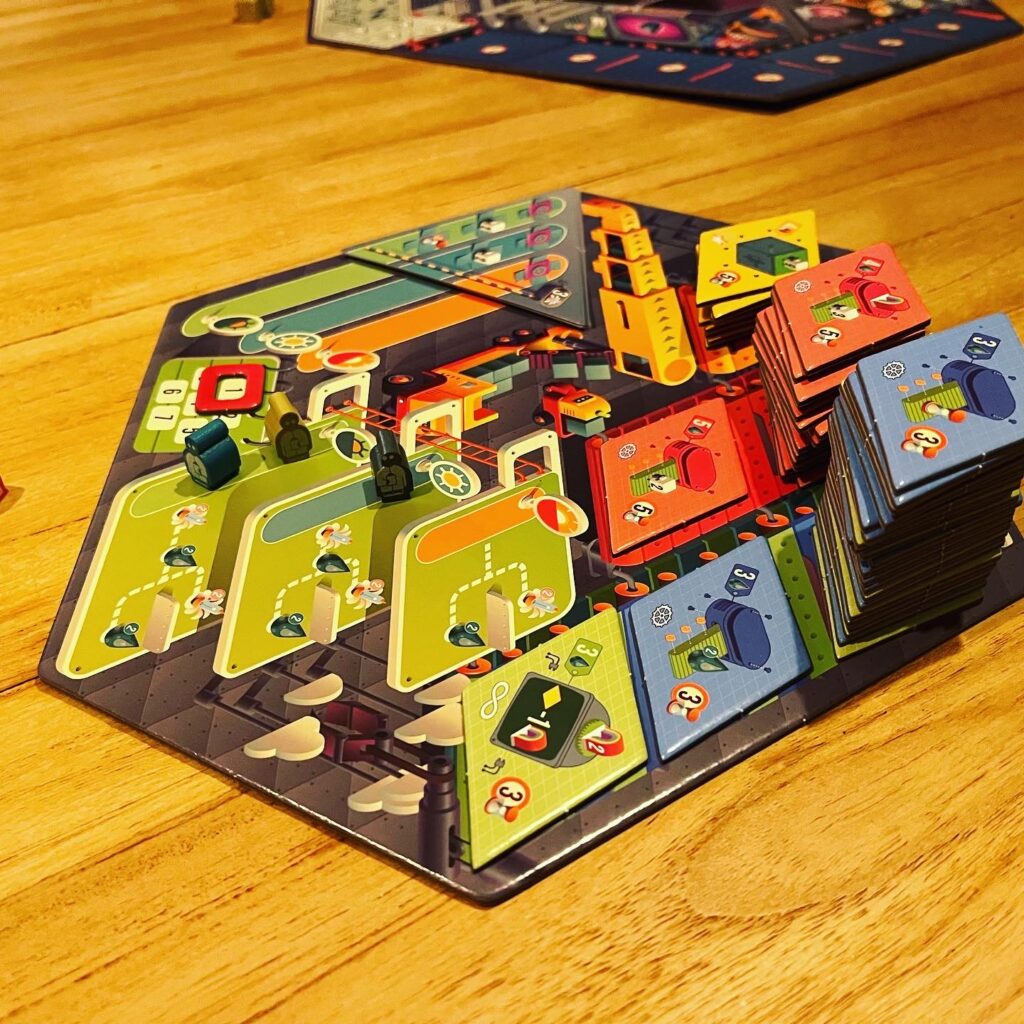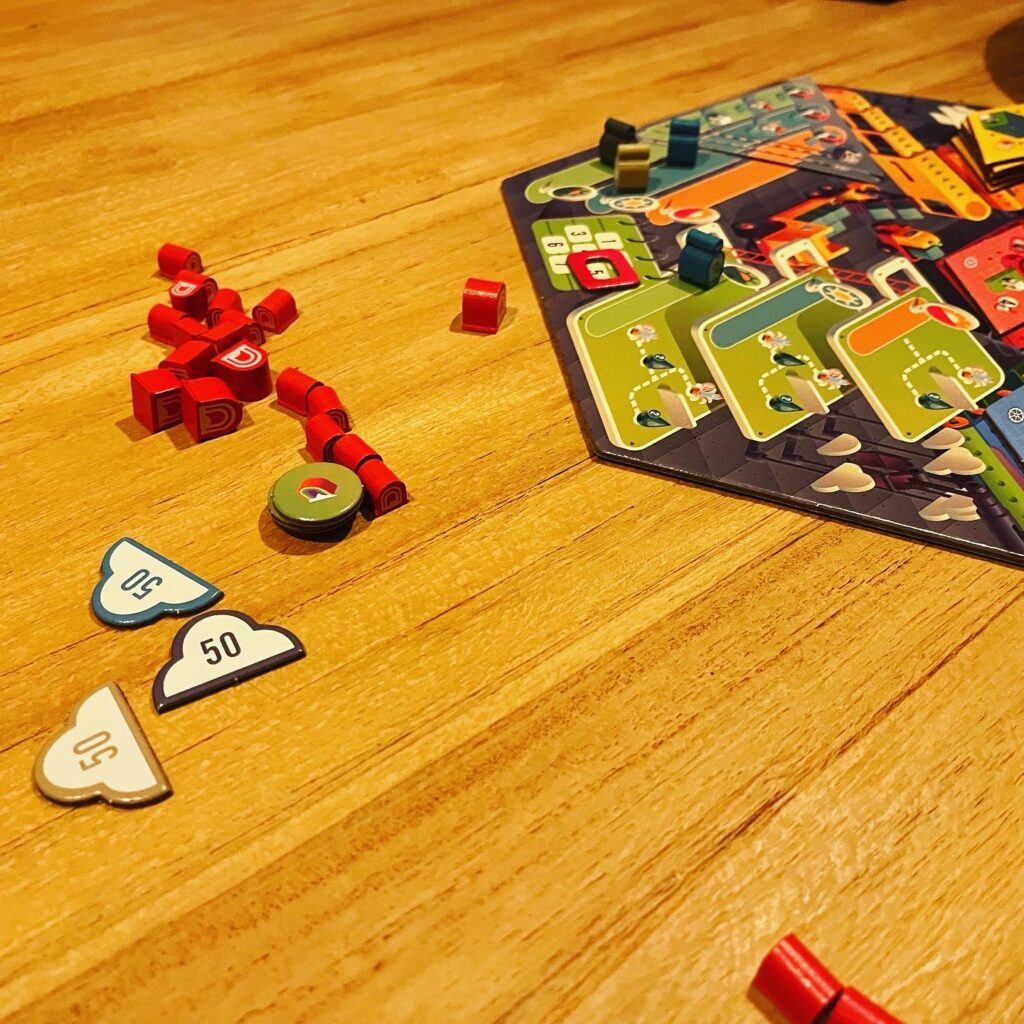Do Androids Dream of Electric Sheep? This is not only a futuristic philosophical question about the humanity of androids and artificial intelligence, it is also the name of a 1968 science fiction novel by legendary science fiction writer Philip K. Dick. In Mech A Dream, players will build a dream machine for a robot, so that the robot can experience dreams just like humans… or perhaps nightmares, in which the robot has not prepared its paper or presentation and also stands in front of its entire class in its robot underwear.

Background
You may not necessarily know Philip K. Dick because of his (short) stories, but you may be familiar with the film adaptations of his brilliant and sometimes weird thoughts full of philosophy, futurology and predictions. Popular films based on his work include Total Recall (obviously the Paul Verhoeven film adaptation with Arnold Schwarzenegger from 1990 and not the 2012 monstrosity), Screamers (1995), Minority Report with Tom Cruise (2002), the groundbreaking animated film A Scanner Darkly (2006), The Adjustment Bureau (2011) with Matt Damon and Emily Blunt, or the popular Amazon Prime series The Man in the High Castle (about an alternate timeline where the Nazis conquered America during World War II).
The story Do Androids Dream of Electric Sheep? is a tale about the moral crisis of Rick Deckard, a bounty hunter who pursues near-human androids left behind after a war in a post-apocalyptic San Francisco. The film adaptation of this story? That’s Blade Runner and its sequel Blade Runner 2049. Two, in my view, brilliant, near-perfect films. Graphic groundbreakers, atmospheric, human and at the same time inhuman, and compelling. Works by Philip K. Dick, and Blade Runner in particular, have inspired countless media. Along with other sci-fi writers of the 1960s and 1970s, it has inspired the entire cyberpunk genre, including the well-known RPG series of the same name (Cyberpunk) and the popular video game Cyberpunk 2077 inspired by it. In these cyberpunk stories, drugs, technology, human augmentations, computers, utopian/fascist worlds and androids and artificial intelligence play an important role.
These stories often cite the dangers of man-made, automated and self-thinking mechanical and technological beings. Fan of this topic? Then also try the fantastic graphic novel Carbon & Silicium. Fortunately, the robots in Mech A Dream are friendly and the only thing missing is a nice dream: Do Androids Dream of Electric Sheep?
A.I. review
Artificial intelligence (A.I.) and its (possible) dangers have also been a hot topic recently. Various chatbots do homework based on outdated databases and artworks are created that are “inspired” by works of existing illustrators and artists. A.I. even spins together entire video games and even television series. A recent example is “Nothing, Forever” an A.I.-written and animated parody of the mother of modern sitcom Seinfeld. It’s not a question of if but rather when for the board game critic to be replaced by A.I., although I do notice that A.I. still struggles to form a (non-controversial) opinion or actually describe a game concept. So to put A.I. to the test, we kindly asked ChatGPT to review Mech A Dream:
Mech a Dream is a unique and fascinating board game where players create dreams for robots. The game is developed by the creative minds behind Dream Factory and offers a unique and engaging gaming experience that is definitely worth trying.
The first thing that stands out about Mech a Dream is the beautiful artwork. The game boards, cards, and game pieces are all beautifully designed and contribute to the overall atmosphere of the game. It is clear that a lot of care and attention has been given to the design of the game.
But Mech a Dream is more than just a beautiful board game. The game mechanics are challenging and complex, but not so complex that it is impossible to understand. The game offers a good balance between strategy and luck, giving every player the chance to win regardless of their skills.
The goal of the game is to create the best dreams for the robots that are on the game board. Players collect dream cards, build up their robots, and ultimately create the dreams they have imagined. There are different types of robots, and each robot has its own unique characteristics and abilities, making the game always different.
Mech a Dream is a fantastic board game that is definitely worth playing. It offers a unique and challenging gaming experience that will appeal to players of all levels. The beautiful design and innovative gameplay make Mech a Dream a must-have for anyone who loves board games.
A.I.
That A.I. is not yet working perfectly is rather obvious! The review, probably because this chatbot works with outdated information, contains wrong assumptions and an incorrect game description. Mech A Dream is not from the same creative minds behind Dream Factory – the overall aim of the game is correct, to create dreams for robots, but what follows is actually bullshit. The actual review is very general and could pretty much be reused one-to-one for other game reviews. A bit like the thirteen-in-a-dozen reviews you occasionally see passing by on social media. But enough negativity. What the A.I. got right is that Mech A Dream is beautifully illustrated, as the art work is colourful and unique, but more on that later. For now, we will continue to write our own reviews. Thank goodness for that 🙂
Goal and setup
In Mech A Dream, players are going to build a kind of dream machine so that a Robot can experience a dream for once. The value of the dream is indicated by two electric sheep that keep track of the amount of dream points. During the game, players collect various resources (flowers, ink and rainbows) and dream points by sending their three assistants out during the day and testing their dream machine at night. The player with the most dream points wins and therefore does not have to undergo the Voight-Kampff test to test for humanity…


At the beginning of the game, all players get their own game board with assistants and sheep. On this board, players can also use two pointers to keep track of how many flowers and ink they have. A central game board is placed in the middle of the table with several stacks of tiles (different parts for the dream machine) and stack of triangular cards with resources that players can collect. Players place the rainboats within easy reach and are ready to daydream and nightdream a bit in a dream flight.
Gameplay
In Mech a Dream, during a maximum of 7 rounds or until a player has placed 9 or more tiles, players start using their assistants to collect resources and tiles during the day phase, and during the night phase activate the various tiles of the robot dream engine. In essence, Mech A Dream is a combination between a worker placement and an engine builder. Both game elements are simple though, making Mech A Dream precisely very accessible for players who want a light gameplay experience or are new to worker placements and engine builders.
Each (working) day is divided into 3 different shifts (shifts), in which players can take turns with their assistants: morning, afternoon, afternoon/evening. Depending on the time of day, workers will be more or less efficient. Workers can be deployed to collect electricity flowers and ink, and depending on the time of day they will receive more (in the morning they are still nice and fresh) or less resources. This makes for interesting choices. After all, when and where do you deploy which assistant?
Besides collecting resources from a dynamic and changing game board, players can also collect tiles. Initially, these are placed under construction, but as time elapses after each shift based on the workers working on this tile, the tile and the corresponding part of your dream machine is completed. Completed parts earn one-off on ongoing bonuses. For example, the purple tiles (red or blue tiles that are completed) earn resource, dream points or construction points during the night phase. The yellow tiles cost rainbows to buy, but yield a lot of dream points. The green tiles give discounts on resources or time to collect and build tiles.
Verdict
Mech A Dream is very nicely and colourfully designed. The different sections have funny illustrations. It’s not just form over substance, as the components, despite being all very small (printed,) clearly indicate through use of colour and symbols what the game components do and deliver. I really like the system whereby your assistants work more efficiently depending on the part of the day. As already indicated, this also creates nice dilemmas for the players. There is not much player interaction as the different spaces on the game board can be used by several players at the same time and the different tiles are plentiful. Sometimes another player may snatch a particular tile from in front of you. There is not an extreme amount of choice, so this disappointment is often only short-lived.


The game feels like an introduction to worker placement and engine building games. The game features simple gameplay, lots of colours and a friendly theme. This makes the game ideal for families or novice gaming groups. The game elements are on the small side though, which means it may not be suitable (without help) for all children – but for families and groups with slightly older children or adults, this game might truly be a dream.



